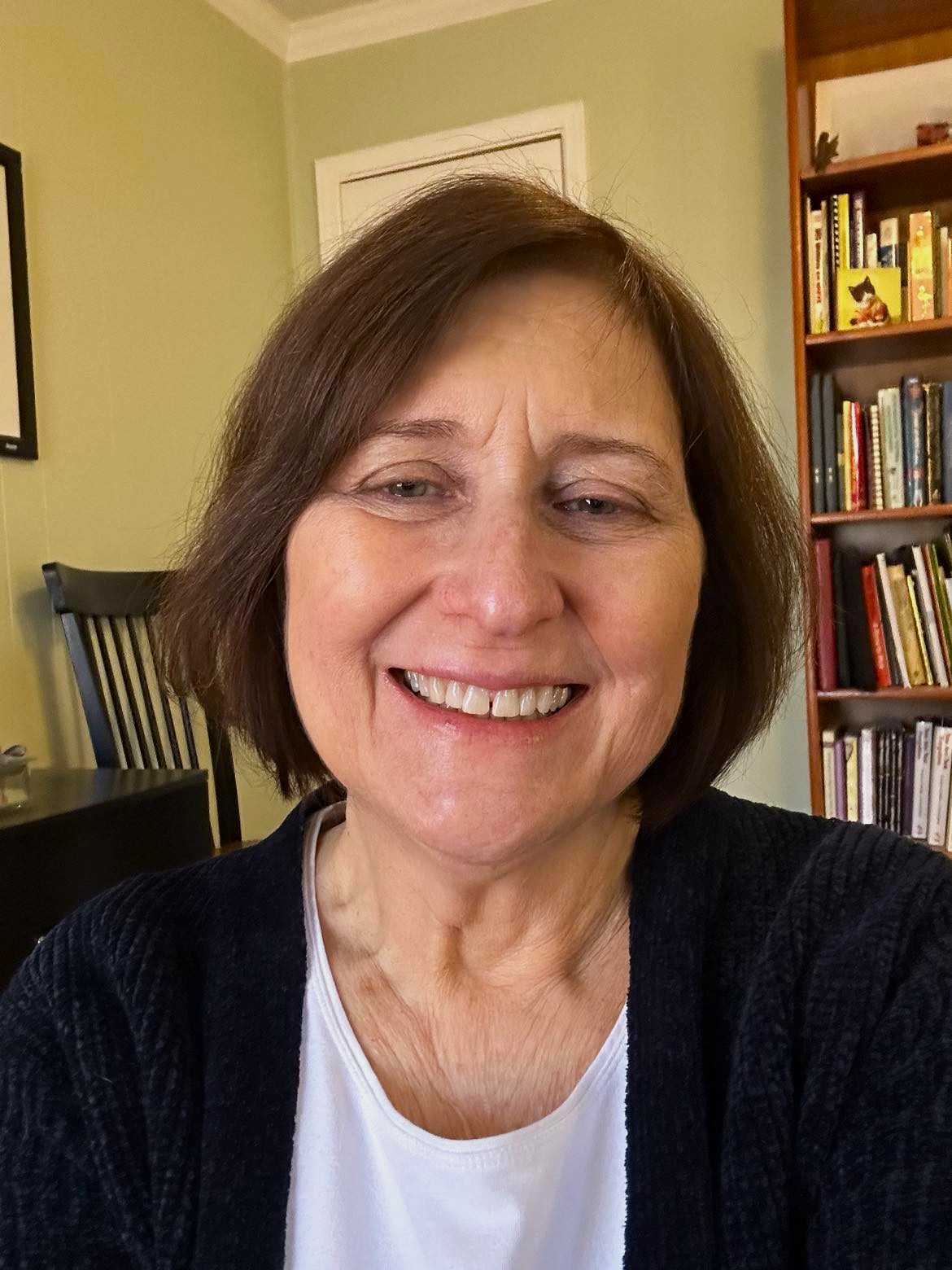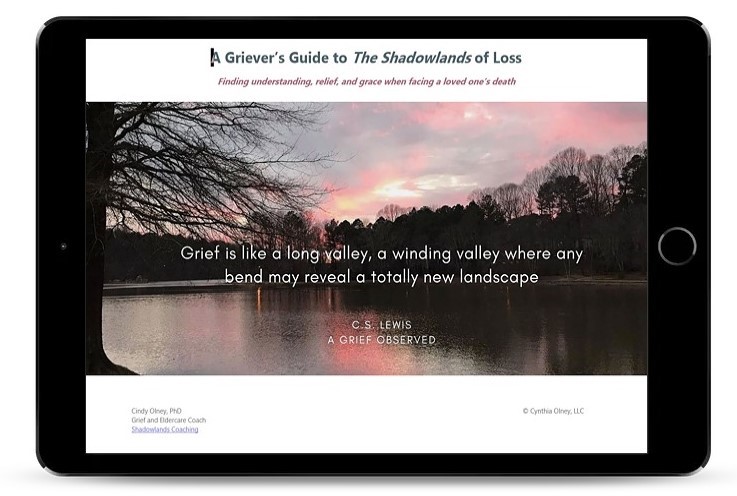New Year’s Eve, 2019.
My husband and I attended a comedy show, our tradition for ringing in the new year.
It was a great show, but on the way home, I noticed my wedding band was missing.
So, we drove back into Atlanta, and I retraced by steps. No luck. All I could do was leave a message for management to call me if anyone found my ring and turned it in.
I didn’t expect to ever see it again.
But a few days later, the theatre manager did return my call. My ring was lost-and-found! I could pick it up at the box office.
So, the first thing that happened to me in that notorious year 2020 seemed miraculous.
But it wasn’t.
Nope.
It was a combination of ordinary luck and the common decency of a fellow human being who found it and chose not to keep it.
I emphasize this point because it proves a lesson that I desperately needed for the chaos and devastation of 2020.
I’m luckier than I often remember. And I’m luckier more often than not.
In effect, the brain is like Velcro for negative experiences, but Teflon for positive ones. That shades “implicit memory”– your underlying expectations, beliefs, action strategies, and mood – in an increasingly negative direction. And that’s just not fair, since probably most of the facts in your life are positive or neutral. ~ Rick Hanson, neuroscientist, Take in the Good
We humans are primed to remember things that go wrong. We store details of life disasters so we can avoid or mitigate future danger.
It doesn’t help that we’re awash in bad news. We literally carry it around in the palm of our hand. It’s like an echo chamber for our nightmares (or worse).
When we feel like we can’t escape dark times, we lose hope.
That’s dangerous. Humans need hope as much as we need water and air.
The Magic of Gratitude
Fortunately, there’s an easy way to combat hopelessness and fear.
It’s the practice of gratitude.
I’m not talking about gratitude exercises popping up in magazines and social media posts these days. Those are focused on making you feel satisfied.
I’m talking about a gratitude exercise that helps you feel safe when your world tilts in a direction you didn’t expect.
It’s described in the book Burnout by educators Emily and Amelia Nagoski. The authors suggest focusing on three specific types of blessings in your life.
- First, reflect on what’s gone right in your life. Find examples of ordinary luck that happened at exactly the right time.
- Second, think about who showed up when you really needed them. Consider friends, family, and strangers. Anyone who showed you kindness, encouraged you, or stepped up when you really needed them.
- Third, recognize how you personally rose to the occasion in dangerous or difficult moments. Remind yourself how much inner strength and skill you mustered in challenging times.
The authors say you can pull examples from any time in your life. But I personally like to challenge myself to find examples from the previous 24-48 hours.
It reminds me that good luck, good people, and good ideas flow daily through my life. And all three keep me mostly, usually, safe.
Proof of Concept
I stumbled on this exercise during the early days of the COVID pandemic. Finding it proved to be its own bit of good luck.
A few months after discovering it, I got a bone-chilling call from my father. He was in lockdown in his assisted living apartment.
“Guess what,” Dad said. “I tested positive.”
He sounded frightened.
His community had been conscientious about following COVID health protocols. But that fall, they’d started cautiously opening up to family members and allowing residents to socialize.
About a month later, the community had a significant outbreak. My father was one of many residents who tested positive.
I had to remind myself to exhale.
A staff member called me later to report that my father was asymptomatic. He assured me they would check in on him regularly.
I became hypervigilant. On my daily calls with Dad, I paid close attention to his breathing. I watched for fatigue. Listened for signs of mental confusion that can signal increasing infection.
I’d pepper him with questions. Are they checking your oxygen levels? Can you breathe, okay? Any fever? Can you taste and smell okay?
He stayed relatively well, so the calls reassured me. At night, however, I’d lie awake with anxiety over the uncertainty of the disease.
That’s when I’d practice the gratitude exercise. Staring into the dark, I forced myself to list all that was going right.
I was grateful for my father’s ironclad immune system, a bulwark against the virus. For his cognitive health that allowed him to advocate for himself. For his computer-literacy which allowed us to have daily Zoom calls that alleviated our mutual isolation.
I was grateful that his community was full of competent staff members who liked my dad. They checked on him five times a day, did his laundry, and delivered his mail during his quarantine.
As for me, I discovered I had tech skills beyond my wildest dreams to help him remotely challenges like password resets, software updates, and technology reboots.
In the end, my father made it through that early COVID infection with no noticeable long-term consequences.
And my mental wellness stayed relatively intact, thanks to the gratitude exercise.
Gratitude and Other Emotions
The purpose of this gratitude practice is not to distract you from your challenging emotions.
Emotions like anger, anxiety, fear, and grief all carry vital information. They guide us through dangerous experiences. They require our attention and respect.
My fear kept me on my toes, listening for subtle changes in my dad’s health that might require medical attention.
Gratitude is not about ignoring problems. If anything, gratitude works by providing tools for the struggle, for further progress. ~ Emily and Amelia Nagoski, Burnout.
This gratitude practice helped me unwind after I’d done everything that was under my control.
It stopped the constant stream of “what ifs” that kept me up at night, even though my father was doing okay.
This gratitude exercise helps us find our way back to feeling safe.
Hindsight Now
When humans tell their stories, they often recount scary situations that are peppered with moments of unexpected luck and help from others.
In the post-game analysis, we marvel at how we ditched logic for intuition and saved the day. How we took a wrong turn and ended up in exactly the right place. How a stranger showed up and gave us the exact assistance we didn’t even know we needed.
We learn a lot through hindsight.
But what if we don’t have to wait? What if we can learn from bad experiences as they’re happening?
What if we can train ourselves to experience hindsight while we’re going through the dark times?
Your Turn
Try it out. Consciously notice when something goes right. When someone shows up out of the blue to help you. When you have a flash of insight that saves the day!
And record your observations. Journal about it. Tell a spouse, roommate, sibling, or parent.
Post on social media. Let’s seed promise among the grievance and rancor that prevails online.
Aim for one account per day, as Emily Nagoski did. Or challenge yourself to do it half a dozen times per day, as Rick Hanson suggests.
Just practice and see if you start to observe what I did.
That miracles and helpers and personal resourcefulness are ordinary parts of life.
We can count on them.
Questions about grief coaching?
Let's talk!

I'm a grief coach who guides bereaved clients through a resilient grieving process.
Working with a grief coach can be game-changing. You can actively engage in your grief and start feeling progress quickly. You can start seeing the possibility of a fulfilling, enjoyable life after loss.
You can learn more about my program by visiting my Work With Me page. Or check out this short video. You also can set up a discovery call to meet me and ask questions about my program. These are free informational calls, and there's no obligation to work with me. You can call if you’re interested in working with me or referring me to someone you know.
Join My Mailing List and Get The Griever's Guide
Would you like to be added to my email list? Just click on the image and complete the form on my sign-up page. Once you subscribe, you’ll get immediate access to my free download A Griever's Guide to The Shadowlands of Loss. I’ll send you some initial emails to introduce myself and answer some questions about grief and grief coaching. After that, you’ll get one or two emails per month with a link to new blog posts and, occasionally, new offers from Shadowlands Coaching. You can unsubscribe at any time.
